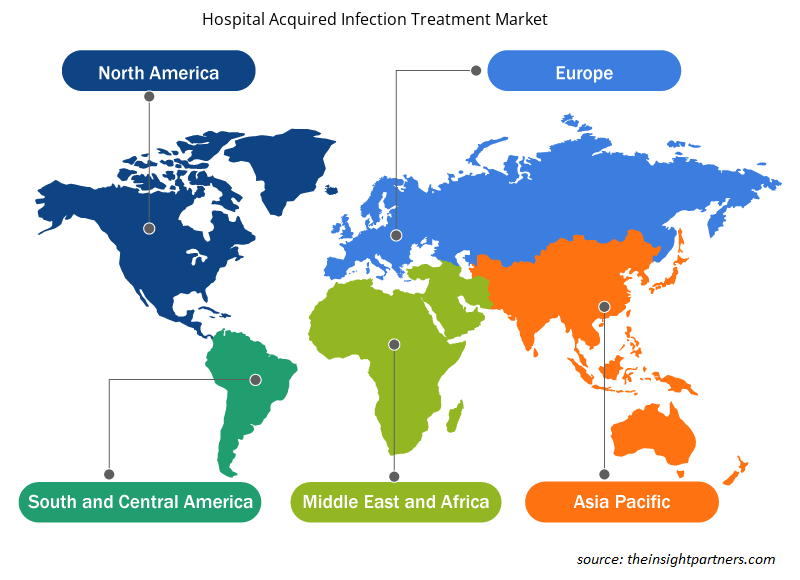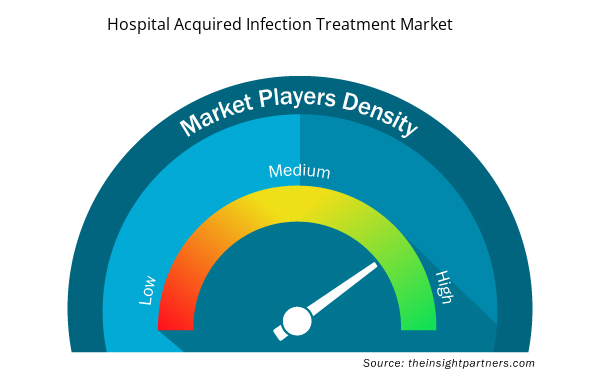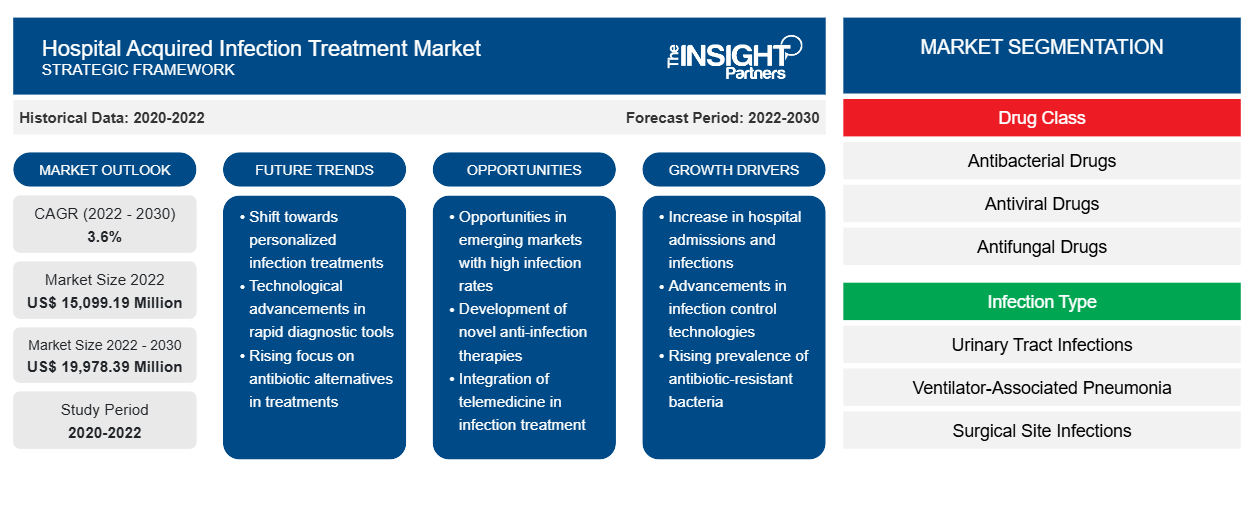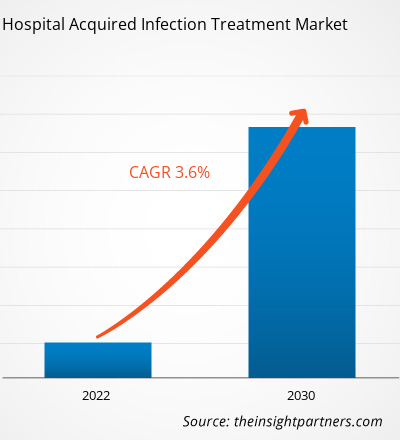[研究报告] 医院获得性感染治疗市场预计将从 2022 年的 150.9919 亿美元增长到 2030 年的 199.7839 亿美元;预计 2022 年至 2030 年的复合年增长率为 3.6%。
市场洞察和分析师观点:
医院获得性感染 (HAI),也称为院内感染,可能在各种环境中发生,包括医院、长期护理机构和门诊环境,也可能在出院后出现。HAI 还可能涉及影响医护人员的职业感染。推动医院获得性感染治疗市场增长的关键因素是 HAI 的高患病率以及对患者安全和优质护理的日益关注。然而,抗菌素耐药性的威胁阻碍了医院获得性感染治疗市场的增长。
增长动力和限制因素:
中心静脉导管相关血流感染、导管相关尿路感染和呼吸机相关肺炎是医源性感染 (HAI) 的几个例子。这些感染被称为手术部位感染,也可能发生在手术部位。根据美国疾病控制与预防中心 (CDC) 于 2021 年发布的《2020 年全国和各州医源性感染进展报告》,2019 年至 2020 年间,美国中心静脉导管相关血流感染、耐甲氧西林金黄色葡萄球菌 (MRSA) 菌血症和呼吸机相关事件的病例分别增加了 24%、35% 和 15%。
此外,根据美国国家医疗保健安全网络 (NHSN) 2022 年 1 月的报告,尿路感染 (UTI) 是第五大最常见的医源性感染类型。UTI 占急性护理医院疾病的 9.5% 以上。导管相关尿路感染 (CAUTI) 是由用于从膀胱排出尿液的导尿管引起的。CAUTI 是住院 UTI 患者中最常见的感染之一。根据疾病控制和预防中心 (CDC) 的数据,近 75% 的感染与导尿管有关。在住院期间,15% 至 25% 的住院患者需要使用导尿管。长时间使用导尿管是感染 CAUTI 的最主要风险因素。CAUTI 并发症会导致患者痛苦、住院时间延长、治疗费用增加甚至死亡。
此外,根据美国疾病控制与预防中心的数据,每年有超过 13,000 人死于尿路感染。急性无并发症膀胱炎会导致大约六天的不适,每年约有 700 万人次就诊,花费 16 亿美元。因此,不断增加的 HAI 病例给医疗保健系统带来了巨大的经济负担。CAUTI 患病率的不断上升,加上对治疗药物的需求不断增加,正在推动市场的发展。
然而,抗菌素耐药性对医院感染治疗构成了重大挑战,限制了现有抗菌剂的功效,并且需要开发新的治疗策略和抗菌替代品来有效对抗耐药病原体。
定制此报告以满足您的需求
您可以免费定制任何报告,包括本报告的部分内容、国家级分析、Excel 数据包,以及为初创企业和大学提供优惠和折扣
- 获取此报告的关键市场趋势。这个免费样品将包括数据分析,从市场趋势到估计和预测。
报告细分和范围:
全球医院内感染治疗市场根据药物类别、感染类型和分销渠道进行细分。根据药物类别,医院内感染治疗市场细分为抗菌药物、 抗病毒药物、抗真菌药物和其他药物。根据感染类型,医院内感染治疗分为尿路感染、呼吸机相关性肺炎、手术部位感染、血流感染和其他医院感染。根据分销渠道,市场细分为医院药房、零售药房、电子商务和其他。根据地域划分,医院感染治疗市场分为北美(美国、加拿大和墨西哥)、欧洲(德国、法国、意大利、英国、俄罗斯和欧洲其他地区)、亚太地区(澳大利亚、中国、日本、印度、韩国和亚太其他地区)、中东和非洲(南非、沙特阿拉伯、阿联酋和中东和非洲其他地区)以及南美洲和中美洲(巴西、阿根廷和南美洲和中美洲其他地区)。
节段分析:
医院感染治疗市场按药物类别分为抗菌药物、抗病毒药物、抗真菌药物和其他药物。抗菌药物在 2022 年占据最大市场份额,预计在 2022-2030 年期间的复合年增长率最高。
根据感染类型,医院获得性感染治疗市场分为泌尿道感染、呼吸机相关性肺炎、手术部位感染、血流感染和其他医院感染。泌尿道感染部分在 2022 年占据了最大的市场份额。然而,呼吸机相关性肺炎部分预计将在 2022 年至 2030 年期间实现最高的复合年增长率。
按分销渠道划分,医院获得性感染治疗市场分为医院药房、零售药房、电子商务和其他。2022 年,医院药房市场占有最大市场份额,预计该市场在 2022-2030 年期间的复合年增长率最高。
区域分析:
根据地理位置,全球医院内感染治疗市场分为五个主要区域——北美、欧洲、亚太地区、南美和中美、中东和非洲。
2022 年,北美占据了全球医院内感染治疗市场规模的最大份额。美国的医院内感染患病率很高,这推动了医院内感染治疗市场的增长。根据疾病预防控制中心的数据,在任何一天,大约每 31 名住院患者中就有 1 名患有至少一次医院内感染。同样,根据疾病预防和健康促进办公室的数据,医院内感染和其他感染可导致败血症,在美国每年导致约 170 万例患病病例和 27 万人死亡。因此,美国人民中医院内感染的高患病率推动了医院内感染治疗市场的增长。
行业发展和未来机遇:
以下列出了全球医院内感染治疗市场的主要参与者采取的各种举措:
- 2023年5月,Innoviva Specialty Therapeutics宣布,美国食品药品监督管理局(FDA)批准XACDURO(注射用舒巴坦;注射用度洛巴坦),联合包装供18岁及以上患者静脉使用,用于治疗由鲍曼不动杆菌-醋酸钙复合体(不动杆菌)敏感分离株引起的医院获得性细菌性肺炎和呼吸机相关性细菌性肺炎(HABP/VABP)。Innoviva Specialty Therapeutics表示,其专注于在重症监护和传染病领域提供创新疗法。
- 2023 年 5 月,印度科学教育与研究学院 (IISER)、浦那和中央药物研究所 (CSIR-CDRI)、勒克瑙的研究人员宣布,他们发现了一种针对经常引起医院内感染的鲍曼不动杆菌的潜在新抗生素。
- 2020年9月,盐野义制药株式会社宣布,FDA 批准了 FETROJA(头孢地洛)的补充新药申请(sNDA),用于治疗由易感革兰氏阴性微生物(例如阴沟肠杆菌复合体、肺炎克雷伯菌、鲍曼不动杆菌复合体、大肠杆菌、铜绿假单胞菌和粘质沙雷氏菌)引起的18岁及以上医院获得性细菌性肺炎和呼吸机相关性细菌性肺炎(HABP/VABP)患者。
- 2020年6月,默沙东宣布,美国食品药品监督管理局(FDA)批准了RECARBRIO(亚胺培南、西司他丁和瑞来巴坦)的补充新药申请(sNDA),用于治疗由敏感革兰氏阴性微生物引起的医院获得性细菌性肺炎和呼吸机相关性细菌性肺炎(HABP/VABP)的18岁及以上患者,这些微生物包括醋酸钙不动杆菌-鲍曼不动杆菌复合体、产酸克雷伯菌、肺炎克雷伯菌、阴沟肠杆菌、大肠杆菌、流感嗜血杆菌、产气克雷伯菌、铜绿假单胞菌和粘质沙雷氏菌。
医院获得性感染治疗市场区域洞察
Insight Partners 的分析师已详尽解释了预测期内影响医院获得性感染治疗市场的区域趋势和因素。本节还讨论了北美洲、欧洲、亚太地区、中东和非洲以及南美洲和中美洲的医院获得性感染治疗市场细分和地理位置。

- 获取医院获得性感染治疗市场的区域特定数据
医院获得性感染治疗市场报告范围
| 报告属性 | 细节 |
|---|---|
| 2022 年市场规模 | 150.9919亿美元 |
| 2030 年市场规模 | 199.7839亿美元 |
| 全球复合年增长率(2022 - 2030 年) | 3.6% |
| 史料 | 2020-2022 |
| 预测期 | 2022-2030 |
| 涵盖的领域 | 按药物类别
|
| 覆盖地区和国家 | 北美
|
| 市场领导者和主要公司简介 |
|
医院获得性感染治疗市场参与者密度:了解其对业务动态的影响
医院获得性感染治疗市场正在快速增长,这得益于终端用户需求的不断增长,这些需求源于消费者偏好的不断变化、技术进步以及对产品优势的认识不断提高等因素。随着需求的增加,企业正在扩大其产品范围,进行创新以满足消费者的需求,并利用新兴趋势,从而进一步推动市场增长。
市场参与者密度是指在特定市场或行业内运营的企业或公司的分布情况。它表明在给定市场空间中,相对于其规模或总市场价值,有多少竞争对手(市场参与者)存在。
在医院内感染治疗市场运营的主要公司有:
- 默克公司
- 辉瑞公司
- 艾伯维公司
- Paratek制药公司
- Eugia 美国有限责任公司
免责声明:上面列出的公司没有按照任何特定顺序排列。

- 了解医院获得性感染治疗市场顶级关键参与者概况
竞争格局和重点公司:
默克公司、辉瑞公司、艾伯维公司、Paratek Pharmaceuticals Inc、Eugia US LLC、雅培实验室、Cumberland Pharmaceuticals Inc、Innoviva Specialty Therapeutics Inc、西普拉有限公司和礼来公司是医院内感染治疗市场的主要参与者。这些公司专注于新技术、现有产品的改进和地域扩张,以满足全球日益增长的消费者需求,并增加其专业产品组合的产品范围。
- 历史分析(2 年)、基准年、预测(7 年)及复合年增长率
- PEST 和 SWOT 分析
- 市场规模价值/数量 - 全球、区域、国家
- 行业和竞争格局
- Excel 数据集


- Frozen Potato Market
- Military Rubber Tracks Market
- Flexible Garden Hoses Market
- Intraoperative Neuromonitoring Market
- Human Microbiome Market
- Asset Integrity Management Market
- Pressure Vessel Composite Materials Market
- Energy Recovery Ventilator Market
- Virtual Production Market
- Electronic Health Record Market

Report Coverage
Revenue forecast, Company Analysis, Industry landscape, Growth factors, and Trends

Segment Covered
This text is related
to segments covered.

Regional Scope
North America, Europe, Asia Pacific, Middle East & Africa, South & Central America

Country Scope
This text is related
to country scope.
常见问题
Hospital-acquired infections (HAI), also known as nosocomially acquired infections. HAIs are infections acquired during medical treatment that were not present at the time of admission. They may develop in a variety of settings, including hospitals, long-term care institutions, and ambulatory settings, and they can also appear after discharge. HAIs can also involve occupational infections that affect healthcare workers.
The hospital acquired infection treatment market majorly consists of the players, including Merck & Co Inc, Pfizer Inc, AbbVie Inc, Paratek Pharmaceuticals Inc, Eugia US LLC, Abbott Laboratories, Cumberland Pharmaceuticals Inc, Innoviva Specialty Therapeutics Inc, Cipla Ltd, and Eli Lilly and Company.
Key factors driving the hospital acquired infection treatment market growth include the high prevalence of hospital-acquired infections (HAI) and the growing focus on patient safety and quality care.
The hospital acquired infection treatment market was valued at US$ 15,099.19 million in 2022.
The hospital acquired infection treatment market, by distribution channel, is segmented into hospital pharmacies, retail pharmacies, e-commerce, and others. In 2022, the hospitals pharmacies segment held the largest market share, and the same segment is anticipated to register the highest CAGR during 2022–2030.
The hospital acquired infection treatment market is expected to be valued at US$ 19,978.39 million in 2030.
The hospital acquired infection treatment market, by infection type, is segmented into urinary tract infections, ventilator-associated pneumonia, surgical site infections, bloodstream infections, and other hospital infections. The urinary tract infections segment held a larger market share in 2022; However, the ventilator-associated pneumonia segment is anticipated to register a higher CAGR during 2022-2030.
The hospital acquired infection treatment market, by drug class, is segmented into antibacterial drugs, antiviral drugs, antifungal drugs, and others. The antibacterial drugs segment held a larger market share in 2022, and the same segment is anticipated to register a higher CAGR during 2022-2030.
Trends and growth analysis reports related to Life Sciences : READ MORE..
The List of Companies - Hospital Acquired Infection Treatment Market
- Merck & Co Inc
- Pfizer Inc
- AbbVie Inc
- Paratek Pharmaceuticals Inc
- Eugia US LLC
- Abbott Laboratories
- Cumberland Pharmaceuticals Inc
- Innoviva Specialty Therapeutics Inc
- Cipla Ltd
- Eli Lilly and Company
The Insight Partners performs research in 4 major stages: Data Collection & Secondary Research, Primary Research, Data Analysis and Data Triangulation & Final Review.
- Data Collection and Secondary Research:
As a market research and consulting firm operating from a decade, we have published and advised several client across the globe. First step for any study will start with an assessment of currently available data and insights from existing reports. Further, historical and current market information is collected from Investor Presentations, Annual Reports, SEC Filings, etc., and other information related to company’s performance and market positioning are gathered from Paid Databases (Factiva, Hoovers, and Reuters) and various other publications available in public domain.
Several associations trade associates, technical forums, institutes, societies and organization are accessed to gain technical as well as market related insights through their publications such as research papers, blogs and press releases related to the studies are referred to get cues about the market. Further, white papers, journals, magazines, and other news articles published in last 3 years are scrutinized and analyzed to understand the current market trends.
- Primary Research:
The primarily interview analysis comprise of data obtained from industry participants interview and answers to survey questions gathered by in-house primary team.
For primary research, interviews are conducted with industry experts/CEOs/Marketing Managers/VPs/Subject Matter Experts from both demand and supply side to get a 360-degree view of the market. The primary team conducts several interviews based on the complexity of the markets to understand the various market trends and dynamics which makes research more credible and precise.
A typical research interview fulfils the following functions:
- Provides first-hand information on the market size, market trends, growth trends, competitive landscape, and outlook
- Validates and strengthens in-house secondary research findings
- Develops the analysis team’s expertise and market understanding
Primary research involves email interactions and telephone interviews for each market, category, segment, and sub-segment across geographies. The participants who typically take part in such a process include, but are not limited to:
- Industry participants: VPs, business development managers, market intelligence managers and national sales managers
- Outside experts: Valuation experts, research analysts and key opinion leaders specializing in the electronics and semiconductor industry.
Below is the breakup of our primary respondents by company, designation, and region:

Once we receive the confirmation from primary research sources or primary respondents, we finalize the base year market estimation and forecast the data as per the macroeconomic and microeconomic factors assessed during data collection.
- Data Analysis:
Once data is validated through both secondary as well as primary respondents, we finalize the market estimations by hypothesis formulation and factor analysis at regional and country level.
- Macro-Economic Factor Analysis:
We analyse macroeconomic indicators such the gross domestic product (GDP), increase in the demand for goods and services across industries, technological advancement, regional economic growth, governmental policies, the influence of COVID-19, PEST analysis, and other aspects. This analysis aids in setting benchmarks for various nations/regions and approximating market splits. Additionally, the general trend of the aforementioned components aid in determining the market's development possibilities.
- Country Level Data:
Various factors that are especially aligned to the country are taken into account to determine the market size for a certain area and country, including the presence of vendors, such as headquarters and offices, the country's GDP, demand patterns, and industry growth. To comprehend the market dynamics for the nation, a number of growth variables, inhibitors, application areas, and current market trends are researched. The aforementioned elements aid in determining the country's overall market's growth potential.
- Company Profile:
The “Table of Contents” is formulated by listing and analyzing more than 25 - 30 companies operating in the market ecosystem across geographies. However, we profile only 10 companies as a standard practice in our syndicate reports. These 10 companies comprise leading, emerging, and regional players. Nonetheless, our analysis is not restricted to the 10 listed companies, we also analyze other companies present in the market to develop a holistic view and understand the prevailing trends. The “Company Profiles” section in the report covers key facts, business description, products & services, financial information, SWOT analysis, and key developments. The financial information presented is extracted from the annual reports and official documents of the publicly listed companies. Upon collecting the information for the sections of respective companies, we verify them via various primary sources and then compile the data in respective company profiles. The company level information helps us in deriving the base number as well as in forecasting the market size.
- Developing Base Number:
Aggregation of sales statistics (2020-2022) and macro-economic factor, and other secondary and primary research insights are utilized to arrive at base number and related market shares for 2022. The data gaps are identified in this step and relevant market data is analyzed, collected from paid primary interviews or databases. On finalizing the base year market size, forecasts are developed on the basis of macro-economic, industry and market growth factors and company level analysis.
- Data Triangulation and Final Review:
The market findings and base year market size calculations are validated from supply as well as demand side. Demand side validations are based on macro-economic factor analysis and benchmarks for respective regions and countries. In case of supply side validations, revenues of major companies are estimated (in case not available) based on industry benchmark, approximate number of employees, product portfolio, and primary interviews revenues are gathered. Further revenue from target product/service segment is assessed to avoid overshooting of market statistics. In case of heavy deviations between supply and demand side values, all thes steps are repeated to achieve synchronization.
We follow an iterative model, wherein we share our research findings with Subject Matter Experts (SME’s) and Key Opinion Leaders (KOLs) until consensus view of the market is not formulated – this model negates any drastic deviation in the opinions of experts. Only validated and universally acceptable research findings are quoted in our reports.
We have important check points that we use to validate our research findings – which we call – data triangulation, where we validate the information, we generate from secondary sources with primary interviews and then we re-validate with our internal data bases and Subject matter experts. This comprehensive model enables us to deliver high quality, reliable data in shortest possible time.


 获取此报告的免费样本
获取此报告的免费样本